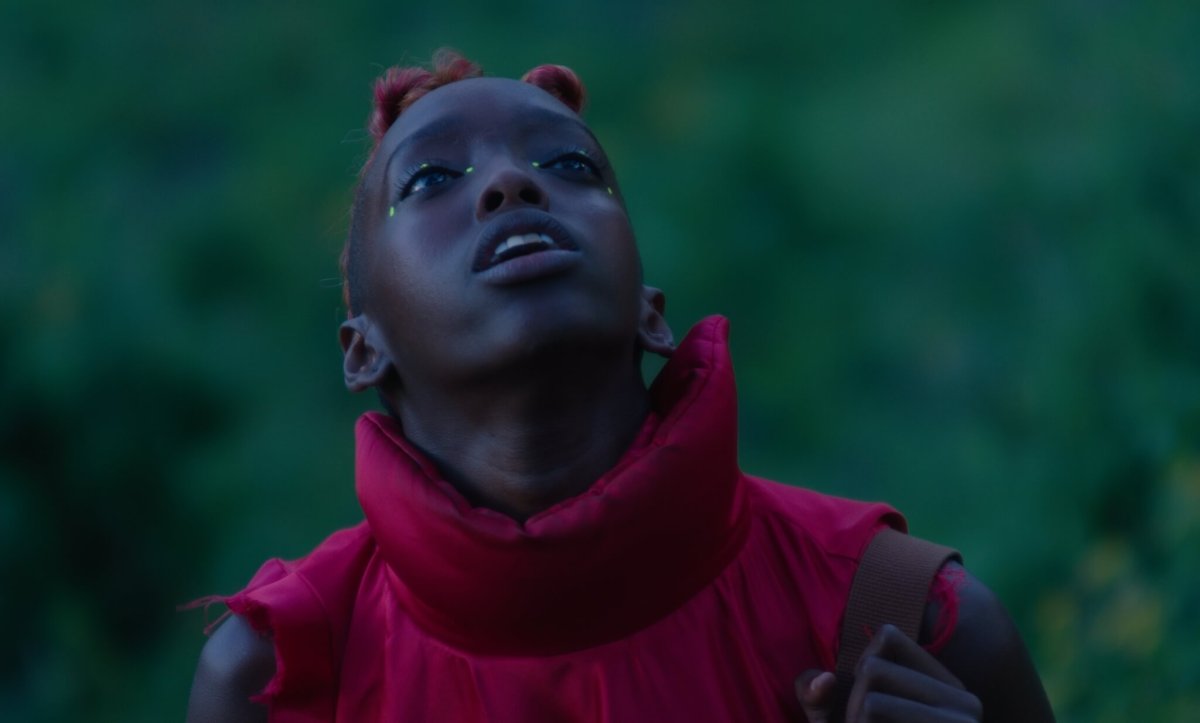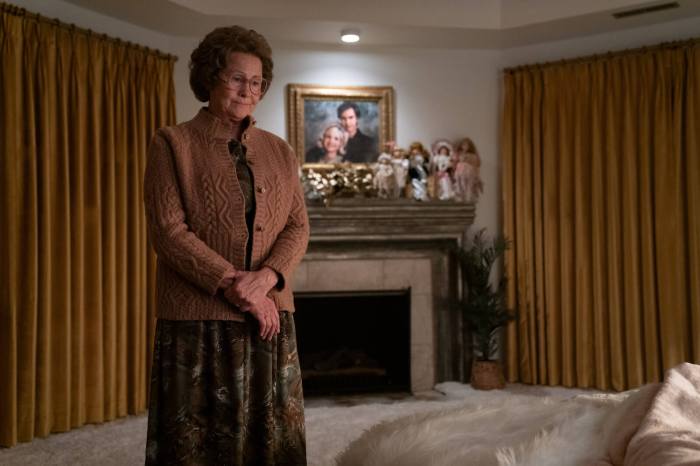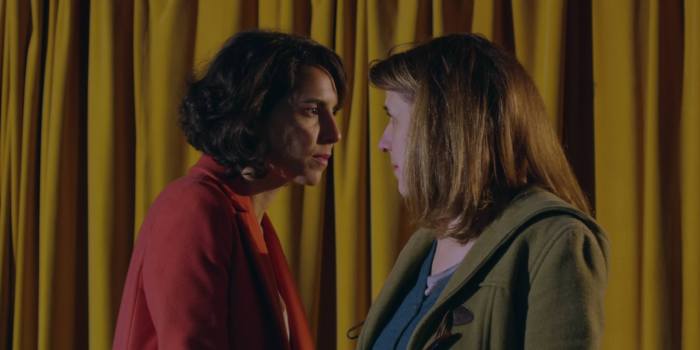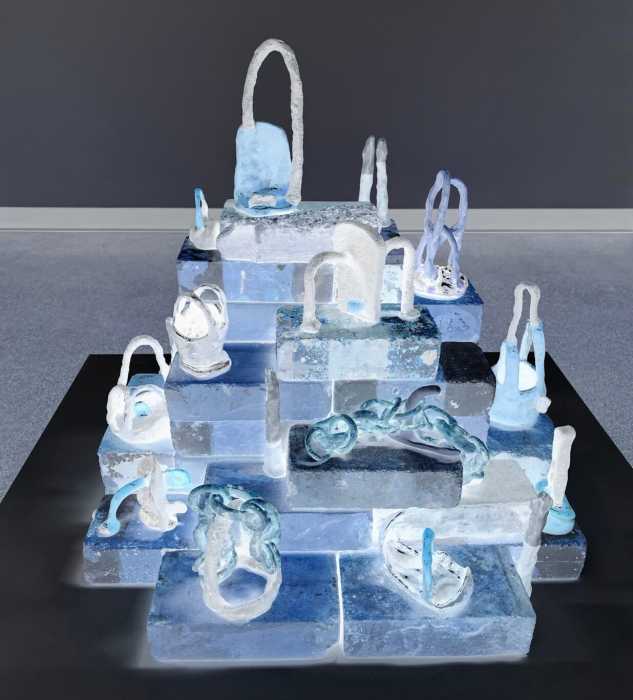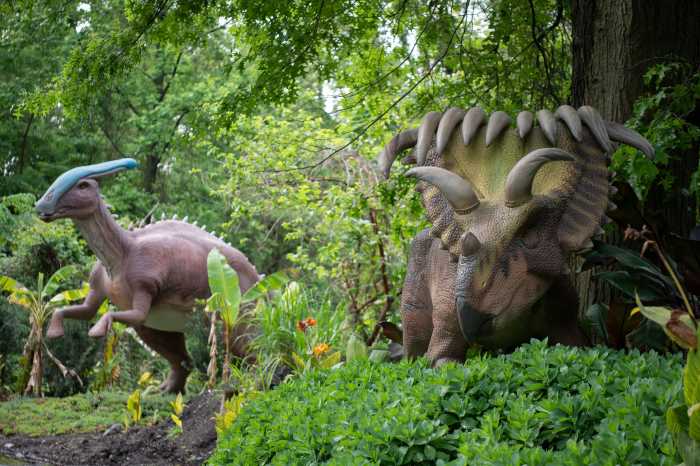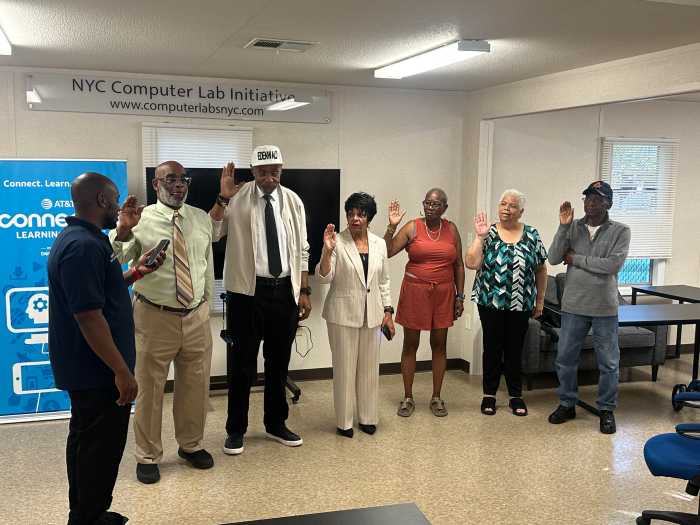Out of the New York Film Festival entries I’ve seen, one, Radu Jude’s “Bad Luck Banging or Loony Porn,” shows people wearing face masks (without taking the pandemic as its subject, although one scene shows an argument over this masking). We’re in for a flood of thoughtless COVIDsploitation, and many of this year’s films may have been shot in 2019 and the first two months of 2020. But the effects of COVID on the festival itself, as a microcosm of New York (and American) life are still ongoing. We remain stuck in limbo facing a full return of cultural institutions.
Last year, the NYFF took place mostly online, with public screenings at drive-ins. This year, the screenings all take place in person, but under the circumstances of the moment: No food or drink concessions are being sold and audiences must keep their masks on at all times. The latest festival has benefited from the pipeline of unreleased films from last year; for instance, Wes Anderson’s “The French Dispatch” was originally slated to premiere at Cannes in May 2020. Korean director Hong Sang-soo is so prolific that he’s no stranger to having several films in the NYFF, but rising gay Japanese filmmaker Ryusuke Hamaguchi also managed that double trick with “Drive My Car” and “Wheel of Fortune and Fantasy.” This year’s selection testifies to the presence of LGBTQ filmmakers on the international festival circuit, from familiar faces like Todd Haynes, Pedro Almodovar (who supplies the closing night film “Parallel Mothers”) and Apichatpong Weerasethakul, to transgender German artist Vika Kirchenbauer, whose short “The Capacity for Adequate Anger” is an excellent, self-critical reflection on class in the art world. Perennial problematic fave Paul Verhoeven got the festival off with a burst of controversy, pissing off a small group of Catholic men who protested his lesbian nunsploitation drama “Bendetta” in person.
While Haynes announced himself as a major director with the now-banned Karen Carpenter-as-Barbie doll “Superstar” and went on to make films devoted to glam rock and Bob Dylan (with one about Peggy Lee in the works), “The Velvet Underground” is his first documentary. Despite being proteges of Andy Warhol (and stars of two of his short films), no quality footage of the Velvets performing live remains. In a way, that’s a gift to Haynes’ documentary. Our eventual glimpse of Lou Reed, John Cale and Nico performing “Heroin” is taken from a French concert after the band had broken up. Haynes skips the talking heads interviews and archival footage formula condemning so many recent documentaries to mediocrity. While we do get to see surviving members John Cale and Maureen Tucker, as well as John Waters, actor Mary Woronov, and composer La Monte Young speaking onscreen, Haynes uses many clips from ‘60s experimental cinema to suggest the milieu from which the band came. Of course, their singer and guitarist, Lou Reed, is now dead, only heard in audio interviews. The film might peak with its first few minutes, which kick off with Cale playing viola like he’s burning a hole in his amp followed by a rapid montage of early ‘60s American TV clips (including the musician’s game show appearance and references to heroin.) At that moment, it copies the style of the avant-garde films it references rather than just showing clips from them.
But while the band’s history and many of these stories will be familiar to much of its audience, the glimpses into the early lives of its members is new — as a high school and college student, the bisexual Reed played at gay bars with a pre-Velvets band and wrote a poetry about hookups in public restrooms. (He wrote about queer sexuality in several of the group’s best songs: “Sister Ray” describes a man receiving oral sex from a drag queen, while more subtly but just as subversively, “Some Kinda Love” stated “no kind of love is better than another.”) It also gives far more credit to Cale than he generally gets in histories of the group; Haynes suggests that their creative spark was based on tension between him and Reed and devotes little time to their final two albums, made with bassist Doug Yule replacing Cale.
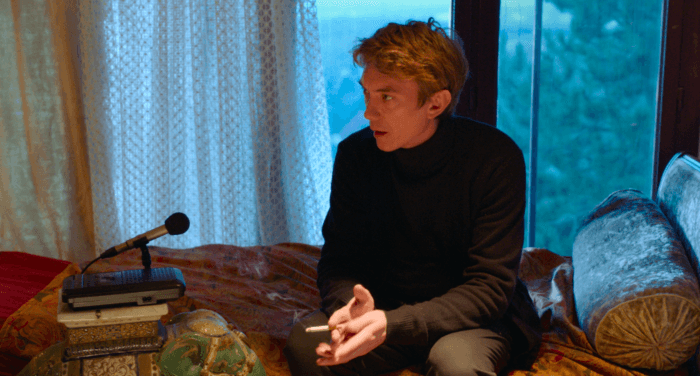
Playing in the Currents section, Claire Simon’s “I Want to Talk About Duras” is radically stripped-down. Based on interview tapes between writer and filmmaker Marguerite Duras’ partner, Yann Andrea, and his friend, Michéle Manceaux (Emannuelle Devos), it treats Duras as a ghostly figure, ever-present but only shown in documentary footage. Andrea, who was gay and 38 years younger than her, describes her power over him. “I Want to Talk About Duras” may have been more gripping if it were even more minimalist. While most consists of two days of interviews, constrained in their choice of camera angles and sets, its attempts to open them up by showing very brief scenes of Andrea visiting a beach or going cruising in a park — as well as Manceaux picturing Duras and Andrea having sex, depicted via drawings — takes away from the power of Andrea’s monologue.
“I Want to Talk About Duras” feels quite literary, in a stereotypically French manner, but Simon — who goes back and forth between documentary and fiction — expertly brings Duras’ dominance of Andrea to life through his verbal recollection of a troubled, abusive relationship. Andrea and Manceaux theorize about what it means for a gay man to be in love with a woman, but he participated in a role reversal as degrading as an elderly man controlling the life of a younger female lover.
“Neptune Frost,” a sci-fi musical made in Rwanda by queer director Saul Williams and Anisia Uzeyman, brings the shock of the new. For one thing, its costume and set design take images usually intended to signify apocalyptic collapse by white filmmakers, like wires and metal glued to walls, and turn them in an optimistic, affirmative direction. The film’s starting point is the exploitation of African labor and resources to mine coltan, used by corporations in wealthy countries to make computers and smartphones. Neptune, an intersex hacker played alternately by Cheryl Isejai and Elvis Ngdo, rises up and figures out how to use technology against capitalists and neo-colonialists. If this sound like a preachy slog, it’s anything but. The lighting and music are vibrant, with a carefully designed, gorgeous color scheme and little interest in conventional storytelling. (Williams, who made his reputation as a poet and musician first, composed the soundtrack.) When American life feels like one long doomscroll, the admonition to “think Black, think gay” in opposition to the mental constraints of Western rationality hits hard: if it’s possible to take back control of the Internet from Facebook, Google and Twitter, this film’s joy – and anarchic disinterest in a clear narrative structure – shows a path forward.
Amin, the gay Afghan-Danish subject of the animated documentary “Flee,” proves to be an unreliable narrator. While “Flee” incorporates rotoscoped video footage of director Jonas Peher Rasmussen interviewing him (in scenes that feel like therapy sessions) and more traditional drawing, it’s told from Amin’s shifting perspectives. (Perhaps because he admits to the lie that helped him gain refugee status in Denmark, even Amin is probably a pseudonym.) Now an academic ready to settle down, marry his boyfriend and move to the countryside, Amin’s past was far more harrowing, as his family were forced to emigrate in the ‘80s. Relocation to Russia (ironically enough) proved only the start of his struggle. Rasmussen and Amin have been friends since they were teenagers, but the director only learned Amin’s full story recently. Unfortunately, that life proves more captivating than the means by which it’s told. The animation is well-done but fairly generic, while the device of sketching Amin’s most difficult experiences with black-and-white drawings loses impact upon repetition. Still, the fact that we’re never given access to Amin’s actual image suggests various forms of closeting which have marked his life. Hiding his gayness in youth was far from the deepest or more painful.
59th NEW YORK FILM FESTIVAL | Sept. 24-Oct. 10 | Film at Lincoln Center: screenings held at Alice Tully Hall, the Walter Reade and other locations | Check https://www.filmlinc.org/nyff2021/ for schedule, locations and ticket purchasing

